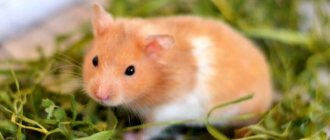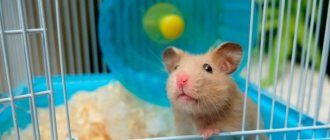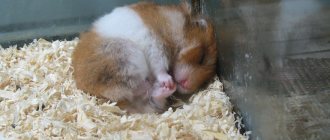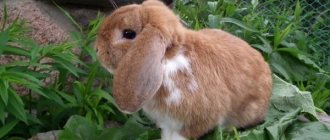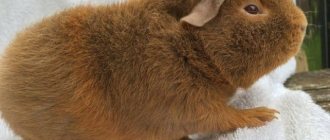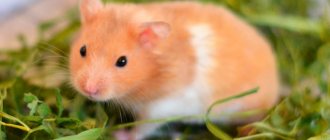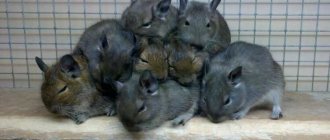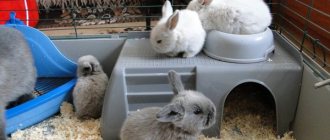- home
- Kinds
19.03.2018
The hamster is a very popular pet. Due to its compactness, it can be installed in an apartment of any size. There are about 20 species in nature. The most suitable for breeding at home are the Djungarian, Siberian and Campbell's hamsters. Breeders are attracted by the low price for the animal and easy care. Let's take a closer look at Siberian hamsters and everything about them.
Habitat in nature
The Siberian hamster's natural habitat is the northern steppe of Kazakhstan and the hilly terrain of Tuva, located in Siberia.
Rodents are nocturnal: in the dark they go out in search of food - this makes it easier for them to avoid encounters with predators (owls and foxes).
As a dwelling, they use self-dug burrows, consisting of a “closet” and a nest, connected to each other by tunnels. Several passages serve to communicate with the surface.
With the onset of cold weather and shortening daylight hours, the animals begin seasonal molting, when their brown fur coat changes to white. This is necessary for camouflage - a snow-white baby is difficult to notice in the snow.
Siberian hamsters have a keen sense of smell, acute hearing and poor eyesight, which is apparently associated with life underground. They recognize each other by the smell emitted by special glands located in the abdomen.
Natural living environment
In the wild, Siberian hamsters live on hilly and flat steppes. They live alone and in small groups. The established community does not accept adult newcomers. The animals' home is burrows, which they themselves dig in the form of tunnels to a depth of 1.5 meters. A labyrinth of numerous passages provides space for nesting and food storage and reaches a length of up to 8 meters.
Males occupy up to 12 hectares of housing area. The territorial qualities of the hamster's character make it possible to carefully protect the home from uninvited guests. Females settle nearby and are under the care of the stronger sex. Their territory is smaller than that of the male. In winter, rodents have to go into prolonged torpor to survive severe frosts. This process cannot be called full hibernation, because animals have to wake up periodically to consume food.
Appearance
In appearance, a hamster looks like a fluffy ball, the diameter of which does not exceed 7 cm. The average weight is 25 g, although at home they gain up to 50 g of live weight on free grub. The head is small, with round dark eyes and small black ears.
There are hairs on the soles of the paws; the limbs themselves are short and have five toes. The tail is almost invisible and covered with sparse hairs.
The summer color of the babies is black and gray, with a brown longitudinal stripe on the back. The belly, like all representatives of the hamster genus, is light, the ears are black.
Currently, geneticists have developed more interesting colors - pearl and sapphire.
In winter, the fur turns white, although seasonal shedding does not occur often at home.
Description of the animal
Syria is considered the birthplace of this breed. In the 20th century, these animals were brought to Europe and quickly became popular among lovers of decorative pets.
The rodent received several alternative names for its unusual coat color and good-looking appearance. He is often called the golden, Ussuri or Persian hamster, and more recently he has acquired the humorous nickname Teddy Bear.
Syrian hamster - appearance
Syrian hamsters are relatively large in size. These rodents have a strong build and grow up to 12-20 cm in length. The male weighs up to 200 g, the female weighs between 120-140 g.
The Syrian hamster looks like this:
- the muzzle is round, with large cheek pouches;
- the eyes are large, shiny, dark;
- the ears are small, rounded, covered with short fur;
- the nasal part is framed by long mustaches;
- the body is short, tightly built;
- miniature paws;
- the tail is short, almost invisible;
- scent glands are localized on the sides and resemble a cluster of rough moles.
On a note. These rodents are distinguished by the specific structure of their limbs. Syrian hamsters have 4 toes on their front feet and 5 on their hind feet.
Depending on the type of coat, the golden hamster is divided into the following types:
- Short-haired with a classic coat, characteristic of many rodents.
- Long-haired with thick fur, the length of which can reach 10 cm. Such golden hamsters have a funny appearance, but their fur quickly becomes dirty.
- Rex with a dense curly coat, similar to sheep's fleece. Such animals were bred quite recently and stand out from their counterparts.
- Satin with a beautiful shiny coat. Golden hamsters of this type are easily confused with short-haired individuals.
Varieties of colors
Most representatives of this variety have a golden coat color. But their color may be different. The following shades are common among Syrian hamsters:
- white;
- cream;
- brown;
- smoky;
- black;
- ginger;
- dark grey.
Features of behavior
The animals are quite noisy, although they are most active at night and you need to be prepared for this.
One of my favorite activities is washing, a rather entertaining and funny sight. Before starting to clean itself, the pet licks its paws, which it then rubs on its cute face and body.
The animal combs its fur coat with its claws. He always has it clean and tidy. By the way, cleaning occurs not so much out of love for cleanliness, but for more practical reasons: a smooth hairstyle retains heat better than tousled and tangled hair.
If your pet gets cold, he will build himself a cozy nest of sawdust, burying himself in it up to his ears. In hotter weather, all the litter will be scattered.
Hamsters often get scared; at the moment of fright, they rush around the corners, press themselves to the floor and raise their small tail up. In moments of danger, it stands on its hind legs and bares its mouth, and can whistle and squeal. At this moment it is better not to pick him up - a bite cannot be avoided.
An animal can also stand on its paws out of curiosity, and will certainly reach out with its front paw towards an object of interest in order to examine it. At the same time, he seems to be listening and sniffing, funnyly turning his cute head.
Behavioral instincts
During the daytime, animals most often sleep in their burrows, and become active in the evening and at night. This is due to the fact that hamsters are crepuscular animals. When purchasing a rodent, you need to take this fact into account.
Hamsters are open creatures and are friendly with children. They do not make noise and are easy to train. They are completely unforgiving, unlike other domestic animals. If your pet is hopping around the cage and jumping, this is a sign that he is in a great mood and invites you to play with him.
There are interesting features in the behavior of rodents. For example, if you notice that your pet is poking its nose at the bottom of the cage, this means that it is hungry and is trying to find food on the floor. It happens that the animal freezes in place or sneaks along the bottom of the cage - this behavior means that it is scared. Standing on its hind legs indicates an extreme degree of interest in something. But if in this position the rodent bares its teeth and makes guttural sounds, you should not touch it - it is showing aggression. However, this does not happen often.
Siberians can be housed in pairs or groups. It is best to do this from the first days of life, since in adulthood they are cool towards strangers. There is no need to put a female and a male in the same cage if you do not need offspring from them. Hamsters reproduce at a tremendous speed.
Rodents love to groom themselves, constantly washing their paws and cleaning their fur.
Content Issues
All hamsters cannot tolerate loud noise and sharp sounds, as they have very acute hearing. By the way, due to poor eyesight, it is better for them to organize soft light, so they will see better. To orient themselves in space, Siberians use their whiskers—with their help, they not only determine the distance between objects, but also the width of manholes.
For home keeping, you can purchase a special cage. It is important that the distance between the rods is no more than 9 mm. Can also be kept in large aquariums.
It is important that there is enough space for running and the fuss that the animal likes to make . You can make additional floors so that the animal can move from one to another.
They also make sure to put up a house where the hamster can hide or just sleep.
Sawdust is used as bedding. You can scatter scraps of white paper; do not use newspaper or notebook sheets, which contain harmful ink.
Set up a feeding area where a metal bowl is placed. It must be heavy so that the animal cannot turn it over.
Another necessary accessory is a running wheel, it can compensate for the natural need for movement.
Comfortable temperature is 18-25 °C.
You cannot place a cage:
- near heating radiators;
- on a windowsill where there is too much sun;
- near open windows or doors;
- in rooms with high humidity;
- and also near household or electronic appliances.
The cage is cleaned once a week; while the home is being cleaned, the animal is transferred to a special container so that the baby does not escape.
Social structure and reproduction
Photo: Syrian hamster
Golden hamsters are very prolific animals, provided they are kept in optimal, comfortable conditions. If the temperature of the space surrounding them is maintained at 20-25 degrees, animals will be able to bear offspring almost all year round. Most often, with good care, a sexually mature female individual bears offspring 3-5 times a year. She can give birth to 5 to 9 babies at the same time.
The period of sexual maturity in males occurs at the age of one month, and in females at the age of two months. It is recommended to breed animals to produce offspring after the female has gone into estrus. Otherwise, individuals can seriously fight, even causing injury to each other. If the hamsters like each other, then they mate successfully. The whole process lasts no more than 10 minutes. Pregnancy may not occur the first time. Then a second mating will be required.
Pregnancy lasts on average 17-18 days. When the time comes to give birth, the female goes into the nest or shelter she has made. The mother feeds newborn babies with milk for another month. After the male has impregnated the female, they must be separated, since pregnant females are characterized by aggressive behavior towards their relatives. The owner should also be careful, since during this period the animals tend to bite.
How to feed?
The easiest way to feed is to use ready-made food, sold in any pet store. They contain a mixture of seeds and grains necessary for proper nutrition of a hamster. Usually one package lasts for a month.
Fruits and vegetables are periodically given as treats. But there should not be too many of them, otherwise the animal may have a bloated belly due to excess carbohydrates. A child will need from 10 to 20 g of “green stuff” per day.
After the next feeding, all leftover food is removed so that it does not spoil and subsequently cause poisoning. Although it is unlikely that scraps will be found in the feeder. The fact is that kids love to stock up “for the winter” by dragging grain in their cheek pouches and hiding them in different corners of the cage. Therefore, the bins are checked and cleaned periodically.
Hamsters usually drink little, since a sufficient amount of liquid comes from succulent food. Despite this, water must be constantly available and changed at least twice a day.
The Siberian is a very cute dwarf animal that will bring joyful bustle and variety into the life of any person.
Diet
In order for your pet to grow up healthy, it is important to provide it with proper nutrition. You need to feed him regularly, twice a day - morning and evening.
Did you know? Dill, plantain and dandelion are a real treat for the animal.
What is possible
The animal's diet must contain grain and granulated mixtures. But you shouldn’t limit yourself only to store-bought food. Include in the menu:
- fruits (including dried);
- vegetables;
- greenery;
- boiled chicken meat;
- egg;
- cottage cheese;
- strawberries;
- raspberries;
- grape.
What not to do
You should not give human food to rodents. It is prohibited to include in the diet:
- fried, salty foods;
- sweet, sour, flour and spicy dishes;
- garlic; beets;
- cabbage;
- onion;
- plum;
- citrus.
Before you get a hamster, find out what to feed it. We recommend reading about what diet is most suitable for hamsters.
The Siberian hamster is a wonderful animal that will bring you and your child a lot of pleasure. However, we should not forget that, like any living creature, rodents need proper care and attention. Their absence can significantly reduce the life expectancy of a fluffy.
Arrangement of the cage
The Syrian hamster, its care and maintenance plays an important role
But providing the most basic needs is of utmost importance. One of these needs is a cage of sufficient size and with the correct contents.
For this type you need a minimum size of 50x30 centimeters. Try to fill it as much as possible. There are many accessories that can add variety to your pet's life.
Make a variety of tunnels whenever possible. Ideally, they connect two cells. But remember, there is only one animal per dwelling (cage). If the fluffies meet somewhere, they won’t be so kind. Each will defend their territory and both will be susceptible to stress and injury. Deaths are not uncommon.
Each cage must have bedding. They buy a special filler for the bottom that absorbs moisture and odor. It is best to use corn.
Characteristics of the Campbell hamster
How long do Campbell hamsters live? The lifespan of different individuals varies quite greatly. On average, a rodent lives from 1 to 2 years. At home, with proper care, a hamster can live longer. The maximum lifespan is up to 4 years.
The most common: Agouti - ivory-colored belly, hair darker at the roots, lighter at the ends. The main color is sand-gray, the belly is yellow-white, and there is a dark line in the middle of the back. Self – the same coat color (sand) on both the back and belly. Characterized by a white chin and white spots on the chest and abdomen. The classic color of wild and most domestic species is agouti. In captivity, many representatives of the breed were bred with a wide variety of colors: from white (albino) to black, spotted, tortoiseshell, silver, satin and many others.
This subspecies is considered the most problematic in domestication. Be patient and be gentle with the animal. Biting is not just aggression. It is definitely caused by one of the following reasons that must be avoided: You made a sudden movement and scared the baby. The conclusion is obvious: avoid sudden movements. Your hands smell like food - before handling your pet, wash them with soap. The hamster has nothing to grind his teeth with - for this, a mineral stone must be provided in the cage. You are picking up the animal incorrectly - you should never pick up the rodent with your hand from above, which will cause aggression, but from below or from the side. It's even better to simply place your hand, palm up, on the floor of the cage so that the hamster can climb onto it himself. In any case, hamster bites, although painful, are not dangerous. Treat the wound with hydrogen peroxide or brilliant green. You cannot scold, let alone shout at your pet. He is not stupid at all and is able to remember this for the rest of his life. Then you will definitely not be able to make friends with the rodent.
It is better to purchase a Campbell hamster from a nursery or from a reputable breeder. Do not buy or take for nothing a sick animal, even if you feel sorry for it. This will only bring frustration to you and your family who has become attached to the pet. There is no need to purchase a rodent that is too old or vice versa
The best age is no younger than 3 weeks and no older than 3 months. When purchasing, pay attention to: The coat should be dry and shiny, without bald spots. The eyes are clean and shiny, without souring. The nose is clean and without discharge. The anus is clean, dry, without discharge or sticky fur. Tip: males are much calmer and easier to tame than females. The first thing you need to do after purchasing, especially if the animal was purchased for children, is to show it to the veterinarian. Remember that ordinary dwarf hamsters are often passed off as Campbell hamsters. Therefore, carefully study their differences.
The Campbell hamster in the photo and in life is very similar in appearance to the popular Djungarian hamster
They can be distinguished by the following criteria: There are no spots on the fur of Djungarian hamsters. The stripe on the back of a Campbell hamster is much narrower, sometimes almost indistinguishable. Doesn’t go into the nose, doesn’t flow into the diamond pattern on the muzzle, like the Dzhungarik’s. When viewed from above, the Dzhungarik is shaped like an egg, while the Campbell's hamster is shaped like a figure eight. The dzhungarik's fur lies smoothly, unlike the second rodent, in which it sticks up. When moving from the back to the stomach, the Djungarian hamster has clearly visible arches, while in the Campbell they are almost invisible or completely absent. Djungarians do not have red eyes. The color of the Djungarian hamster is predominantly gray, black and brown, while the Campbell's is sandy, creamy and golden.
On the domestic market, the price of a Campbell hamster ranges on average from 150 to 300 rubles per individual.
Advantages of keeping the species:
- Attractive appearance.
- Small size: does not require a large cage or large food expenses.
- There is no unpleasant odor even if there are errors in the content.
- Does not require much attention: loves to be alone, which is convenient for busy owners.
Difficulties in keeping a hamster:
- It is difficult to comply with the conditions for keeping in a group.
- Not suitable for children under 12 years of age.
- A difficult and long process of taming.
- Aggressive: often bites and does not give in to hands. Some especially restive individuals have to be handled only with special gloves.
- It is nocturnal, so it makes noise at night.
- Does not tolerate change of environment well.
The Campbell hamster is considered the most aggressive of the dwarf breeds. It is very difficult to tame or at least gain trust. Khomka does not like it when people pick him up and try to get into his home. Expresses dissatisfaction with attacks and painful bites. The subspecies is more suitable for observing the life of hamsters from the outside.
Where to place it?
Before you bring a hamster into your home, you need to prepare a place for it to live. If you don't take this seriously, the baby will get lost in a large apartment and die.
Hamsters are not very demanding of the external environment, but feel good at a comfortable temperature of 17 to 26 degrees Celsius.
Everything that is unpleasant for us will not be pleasant for the hamster either. When assigning a cage to a particular place, you should think about whether it will be comfortable for him to be there. Considering the negative impact of some places in the house, we can conclude that you should not install a cage:
- near the radiator;
- on the windowsill, in direct sunlight;
- near operating equipment;
- in a draft;
- in noisy places;
- in bedrooms (taking into account the nocturnal lifestyle of pets).
Syrian hamster
An adult Syrian can reach 19 centimeters; this subspecies is quite large compared to its counterparts
Representatives of this breed are very loving, they need the attention of their owner. The Syrian hamster is easy to tame because
They love to spend time in their arms and are always happy to communicate.
The average weight of a Syrian is 100-200 grams. Animals of this breed can be short-haired or long-haired.
The Syrian hamster lives from 2 to 3 years. If you are not going to breed them or maintain the population, then it is better not to purchase expensive cages.
For a comfortable stay you need to purchase:
- cage size 40x60;
- wheel ø about 18 centimeters.
It's still a pity
The forest hamster carbysh causes many problems to gardeners. Everyone must decide for themselves how to get rid of it. However, it is not for nothing that ultrasonic repellers were invented, which are installed in small areas. Hearing a sound that is harmless to people and pets, the forest hamster simply does not come to the site, so there is no need to get rid of it. Or humane traps that allow you to catch and release an animal without harming it. We must remember that ordinary mousetraps will not be able to hold a strong hamster. Traps can cause pain and distress, especially if they are left in the hot sun. The hamster cannot stand the heat and will die in a few hours in the sun.
From our article you learned who the karbysh are, but I would like to add a few lines. A person can come up with a lot of things in order not to destroy living things. But often he begins to hate nature, which causes him damage. And the culprits are small animals. But at the same time, one should think about whether humans are not entrusted with the function of controlling the growth of populations of some animals, such as wolves and foxes, which destroy hares. If this mechanism did not exist in nature, then rodents would soon eat all the plants, and, possibly, small invertebrates, and then each other.
The main thing is to approach what we do wisely. After all, we are not wild animals and we must constantly think about how to make sure that all living beings on this planet have enough space and food. Perhaps in the distant future it will be possible to come up with means of controlling rodents that will not lead to their death, or invisible and non-traumatic barriers will be created so that it will be possible to protect your plot of land from uninvited pests.
